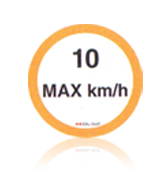Legally Required Safety Equipment
PFD or Lifejacket
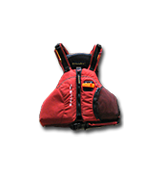
There must be 1 of suitable size for each person on board and each needs to be approved for use in Canada and inherently buoyant.
Buoyant Heaving Line
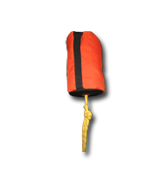
One buoyant heaving line at least 15m (49’3”) long. Not required if everyone on board is wearing a lifejacket or PFD.
Bailer/Manual Bilge Pump
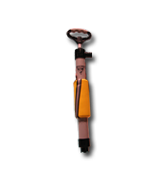
One bailer or manual bilge pump is required for your PWC. Not required if everyone on board is wearing a lifejacket or PFD.
Manual Propelling Device or Anchor
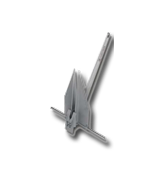
One manual propelling device OR one anchor attached to at least 15m (49’3”) of cable, rope or chain in any combination. Not required if everyone on board is wearing a lifejacket or PFD.
Sound-signalling Device
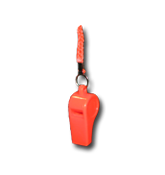
One sound-signalling device or appliance. This could include a pealess whistle, a foghorn or a compressed air foghorn.
Navigation Lights 1
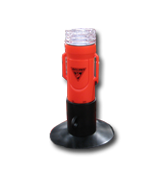
Navigation lights for a PWC must follow that of a power craft.
Fire Extinguisher
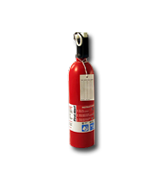
One 5BC fire extinguisher. Not required if everyone on board is wearing a lifejacket or PFD.
Watertight Flashlight or Flares
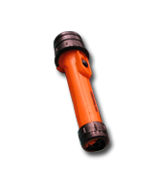
One watertight flashlight that is in working order and has properly functioning batteries OR three flares of Type A, B, or C.
Radar Reflector 1
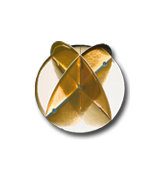
Radar reflectors are required for all boats under 20metres and boats that are built of mostly non-metallic materials.
Magnetic Compass

One magnetic compass, that meets the requirements set out in the Navigation Safety Regulations. Only required if operating your PWC in the absence of navigation markers.
1 - Only required under certain conditions.
Recommended Safety Equipment
Handheld Marine GPS
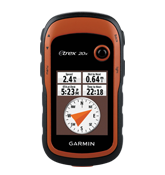
A good Marine GPS unit can calculate where you are, anywhere on the planet, to within at least 30 m.
Portable Marine VHF Radio
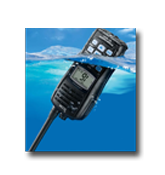
A VHF Radio can help you communicate in case of an emergency.
Heliograph
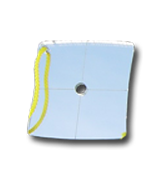
A small mirror with a hole for sighting, used to aid in signalling other boaters.
PLB
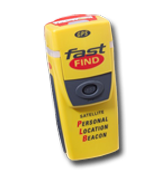
A Personal Locator Beacon
Recommended Emergency Gear
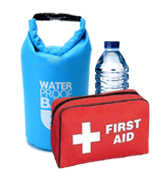
Misc Items Description
Rules and Regulations
Rules of the Road
Knowledge of the Rules of the Road is critical to the safe operation of vessels especially in tight quarters. These rules are best understood in terms of one boat having the right of way and the other having the responsibility to give way. The terms often used are those of the “Stand-On Vessel” and the “Give-Way Vessel” respectively.
The Stand-On vessel has the responsibility to maintain course and speed such that the Give-Way can determine the best action to stay clear. The Give-Way vessel has the responsibility to take EARLY and SUBSTANTIAL action to avoid the Stand-On vessel. Appropriate actions to give way include stopping, slowing down or altering course to go behind the vessel with the right of way.
PWC’s are considered to be Powerboats and are subject to those same rules.
Three basic scenarios come into play with respect to sailboats and Rules of the Road. They are:
- PWC encounters another powerboat
- PWC encounters a sailboat
- PWC encounters a canoe, kayak, paddleboat or rowboat
Over-riding Rules of the Road
- Any boat under 20m (65’7”) in overall length is required to give way to larger vessels that can only safely navigate within defined traffic lanes. (Eg. Lake Freighters, Ferries, etc.).
- Vessels towing objects or other boats, by default, have the right of way and should be given a wide berth as the tow lines may be submerged.
Despite the rules discussed in this section, the Collision Regulations state that, regardless of which vessel has the legal right of way, each operator must do everything in their power to avoid the risk of collision.
Signalling for Help
When it comes to signalling your need for assistance, a key factor that comes into play is how far away you are from those whom you will need to communicate with. Some pieces of signalling equipment are designed for short distance signalling (where help is within visual/audible range), others for medium distance signalling (where help is just outside the visual range) while still others for long distance signalling (where help is outside reasonable visual range.) You should, therefore, ensure that you have the signalling capabilities best suited to the maximum distance you may encounter within your boating environment.
Because of the compact nature of smaller sailboats, it’s not easy to carry a lot of signalling equipment. At a minimum, the Small Vessel Regulations mandate that the following be carried on board.
- Either a watertight flashlight OR 3 flares of types A, B or C must be carried on board. If possible to carry both, the more equipment, the better. (Even though dinghy sailboats often do not come equipped with navigation lights and, as such, aren’t designed to be used after dark, you could breakdown just before dusk and need to signal for assistance after the sun sets.)
- A sound signalling device or appliance.




